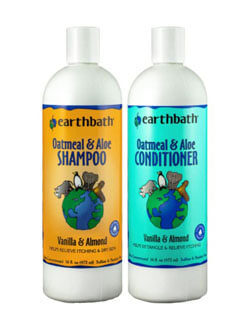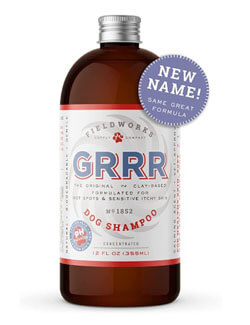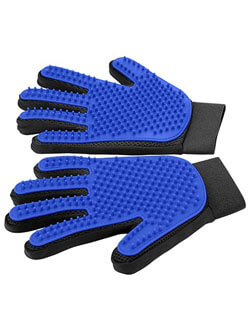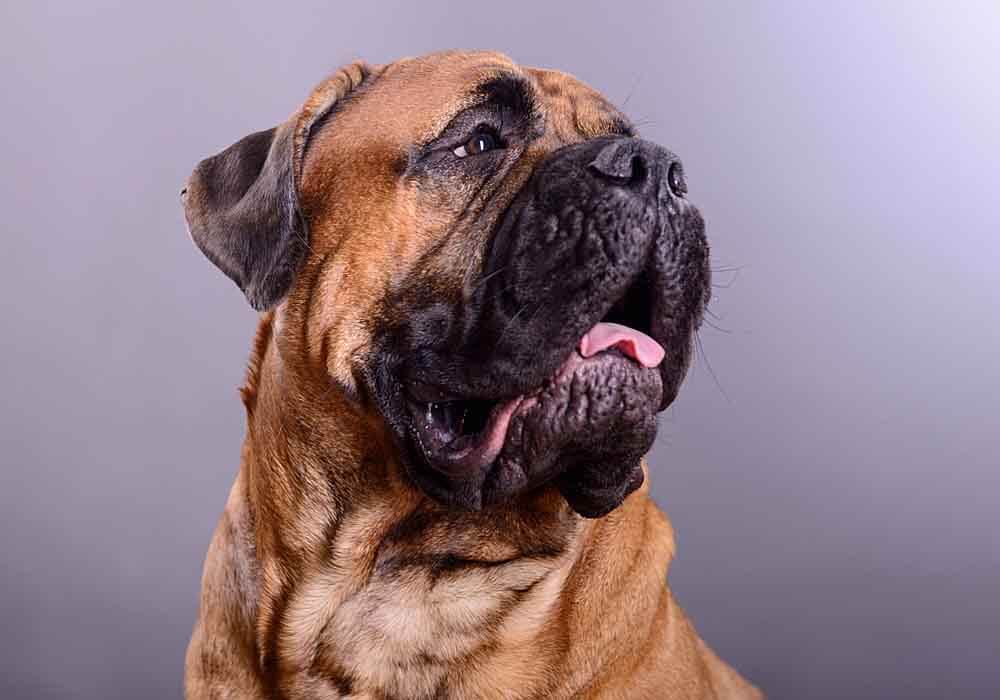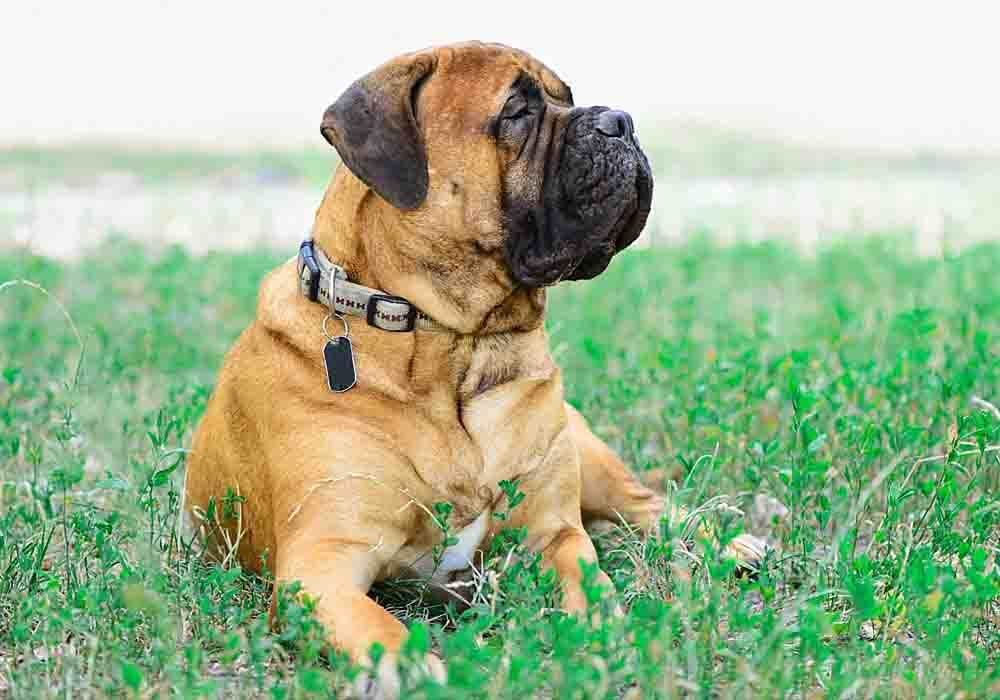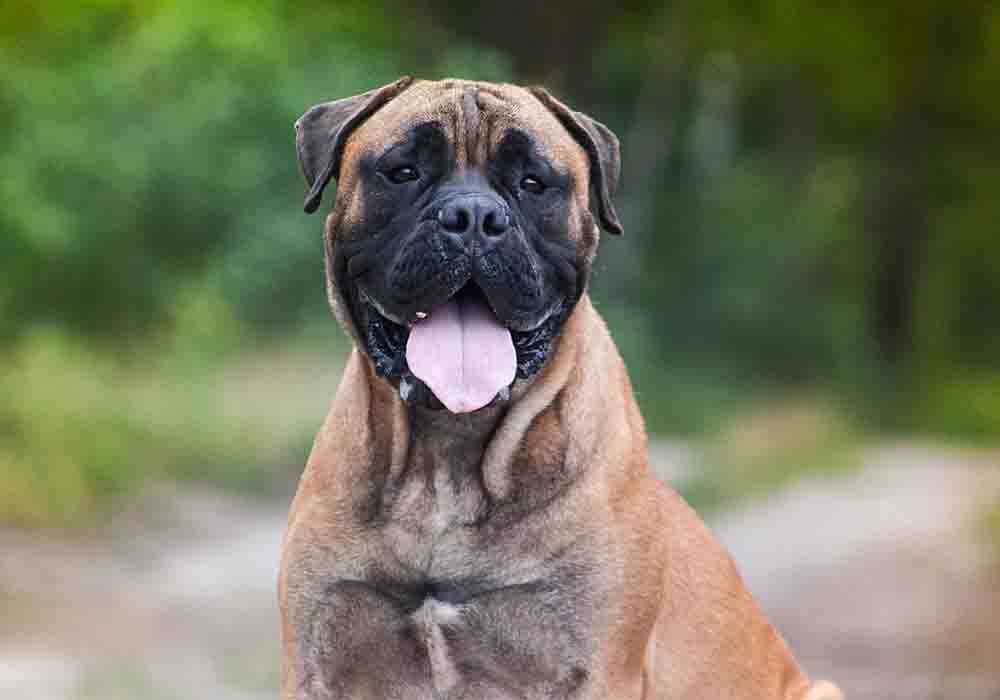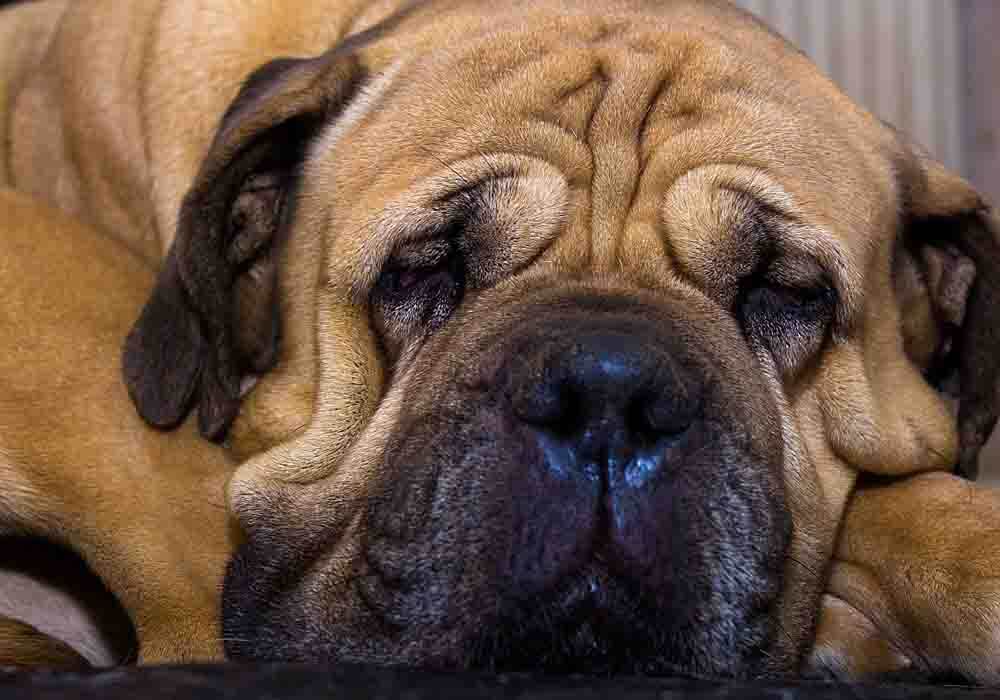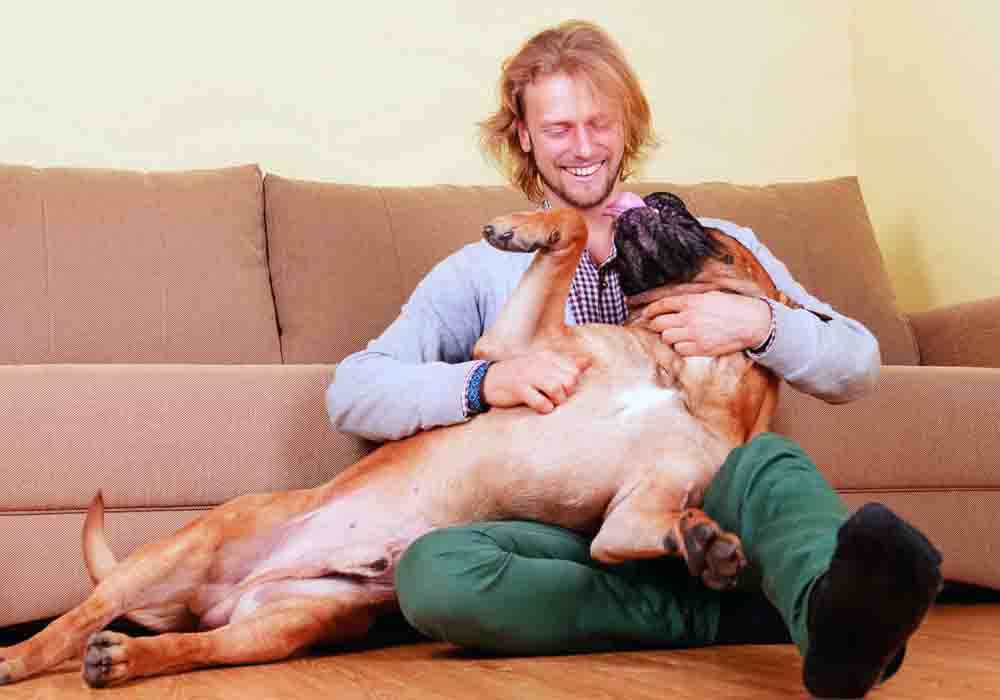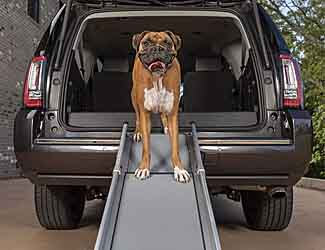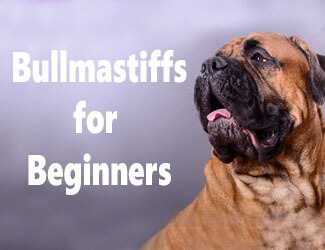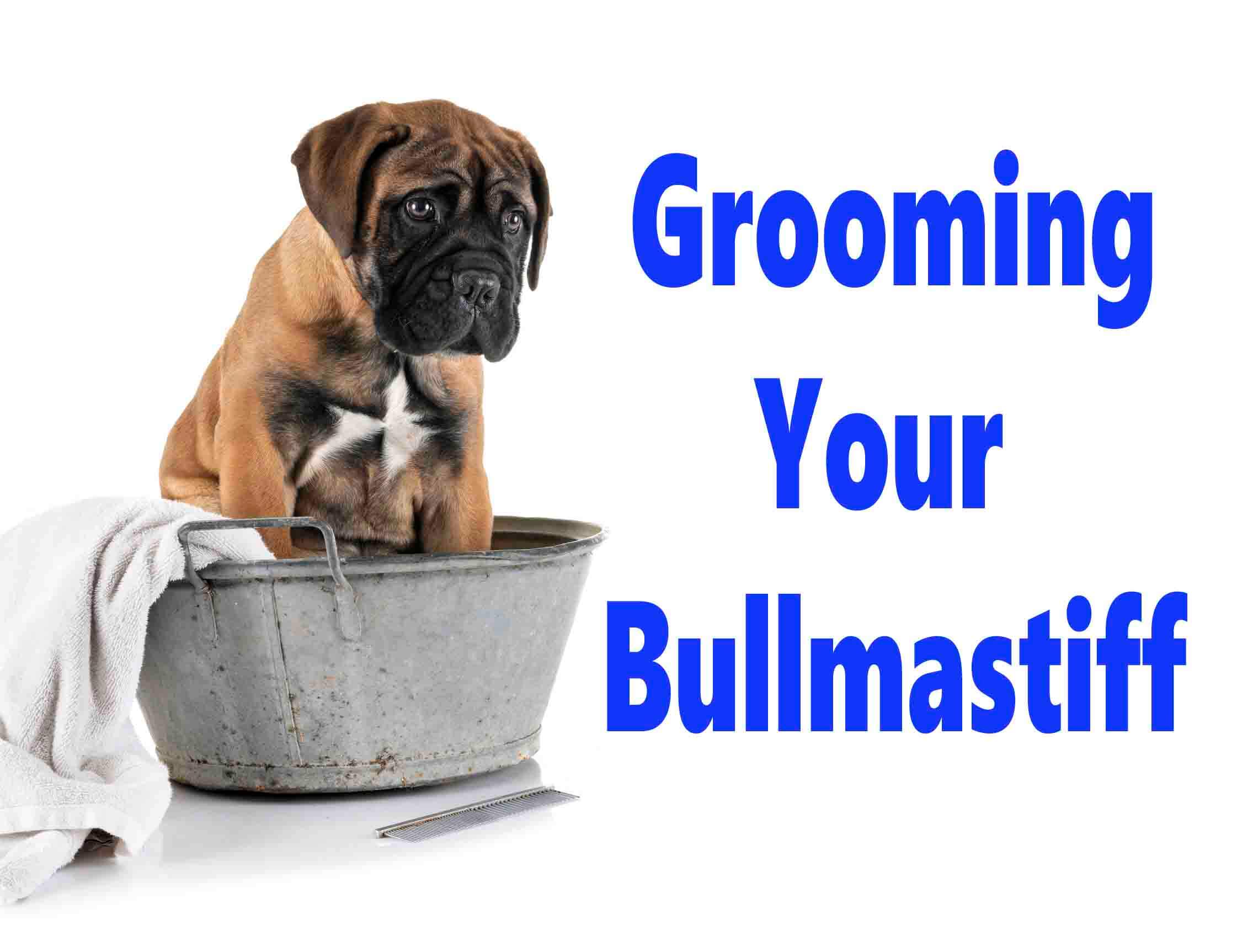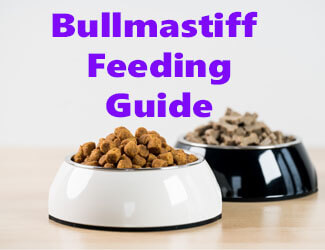Bullmastiff Grooming Guide
Bathing, Ears, Coat & Teeth
by Ken Alden
Grooming Bullmastiffs isn’t that hard. They are much easier to groom than most breeds including Terriers, Cocker Spaniels, and even Cane Corsos. Health issues are much more prevalent in Bullmastiffs, however.
Bullmastiff Grooming Guide Basics...
For starters, Bullmastiffs need to be bathed and brush regularly. Bathing with shampoo should be done every 5-7 weeks. Brushing, on the other hand, needs to be done at least twice a week to maintain their luscious, thick, dense coat.
Ears should be inspected for infections every week and be cleaned with some sort of oil or a very dilute hydrogen peroxide solution. Brushing of teeth plays a crucial role in maintaining oral health and needs to happen 2 times per week. Lastly, nail clipping needs to be done with proper dog clippers whenever claws grow long (which takes around 3 weeks).
Grooming Bullmastiffs is a rather uncomplicated task. All you need is the right guidance, which we’re here for! Keep on reading to learn everything you need for proper grooming and care of your Bullmastiff. Let’s start with bathing...
Pro-tip: Ever try lifting a Bullmastiff? Their weight can hurt not only your back but their joints when they hop down from cars, sofas or even your bed. To protect your back and theirs check out the best Mastiff ramps on Amazon.com now.
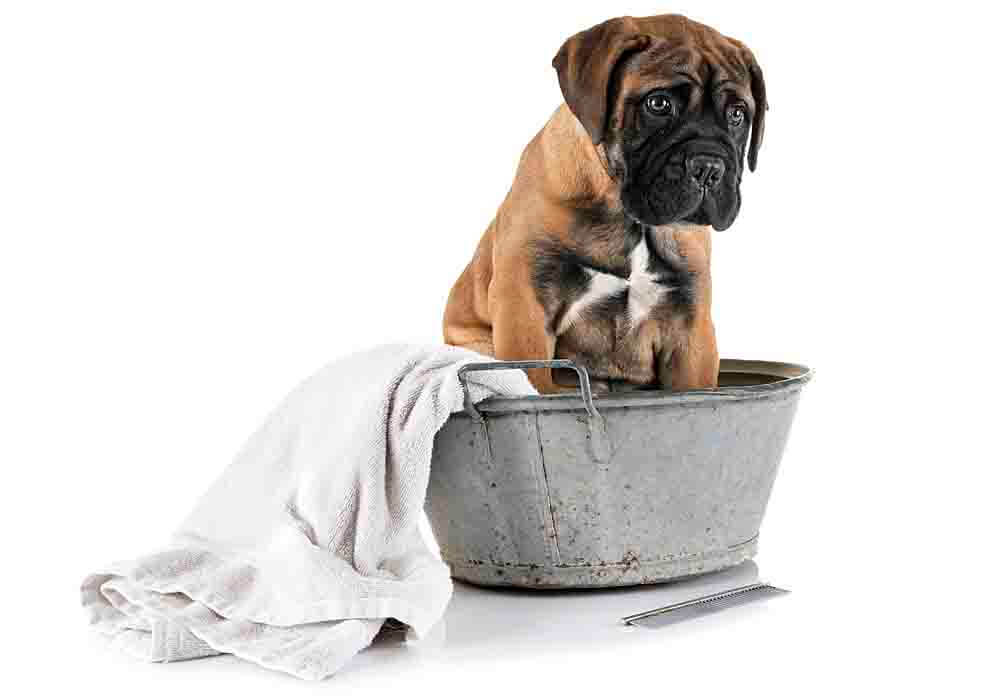
How Often Should I Bathe My Bullmastiff?
Bullmastiff is one of the few breeds of dogs who aren’t playful. They’d much rather stay indoors, as it helps them beat the cold and heat. Since they stay inside home for longer, you’d want your dog smelling clean and fresh. The best way to do that is bathe these dogs every 5-7 weeks, depending on the lifestyle, exercise routine, and playfulness.
Bathing for Bullmastiffs is essential for a couple of reasons. First and foremost, these dogs boast a short, dense coat that sheds a lot. Shedding is minimized with proper, routinely showers. Next, their coat can be a breeding ground for ticks and fleas. Not only is it unhealthy for them, but it’s also extremely annoying and a health hazard for humans too.
How To Bathe A Bullmastiff...Here’s A Few Steps
- Go over the entire body of your dog with a high-velocity dryer. It helps swiftly remove any loose hair and blows away most chunks of dirt and debris. If you don’t have a high-velocity dryer, a slicker brush will do just fine.
- Now it’s time for the bath. Pick a suitable location for your big buddy. If your dog isn’t scared of water, use the bathtub in your washroom. Bathtubs are not likely to clog since the hair of a Bullmastiff is short. If the dog dislikes bathtubs, consider taking them outside. Don’t force the dog to get in a tub, as you may hurt your back or knees pulling 110 pounds or more.
- If outdoors, ask someone to hold their leash or tie the leash to a tree or pillar.
- Start by wetting your Bullmastiff from their back to the tail, avoiding the face and ears. Jumping in with spraying water on their face might startle them and they’ll bolt or start barking.
- Mastiffs are very laid-back and disciplined. You don’t have to be too assertive and firm with them. Just a stern “yes”, “no”, “still”, “sit” or “stop” will do the job.
- If your bullmastiff isn’t causing any trouble, pour a pet-friendly shampoo on him. Start lathering it, then rub it and massage your gentle giant as you go. Dogs really appreciate this loving gesture.
- Make sure to not get any shampoo in the eyes or ears. Bullmastiff’s ears are very sensitive and they need to be kept dry.
- Begin rinsing your big pup. Start from the neck and move down all the way to its tail. This prevents the soap from spreading to the areas you’ve already rinsed. Rinse the body properly and make sure no soap is left. Run your hand through the coat a couple of times.
- Moving on to the drying part. Have 3-4 towels ready. Start drying from head to toe. Let your Bullmastiff shake the loose water droplets off.
- Damp a washcloth in room temperature water and clean the face wrinkles with it. Bullmastiffs drool a lot and need proper washing. You can use cotton balls to deeply clean the crevices.
- In the end, dry your dog’s face with a fresh towel.
You should never use shampoos formulated for human hair on a Bullmastiff. Since the pH of their skin and our hair don’t match, it’s likely to irritate their skin and potentially damage their hair.
There’s also no need for a conditioner. Their coat is moisturized by natural oils secreted through the skin.
You can prevent odor and bacterial growth for a long time if you spray a mixture of one part water with one part Listerine.
Pro-tip: Bullmastiff anxiety, aggression, destructive chewing, jumping up, fearfulness, and other behaviors can be controlled with the right training program.
Here’s a great course that
addresses these issues along with many other dog training basics: Check it out now!
Best Dog Shampoo For A Bullmastiff...Here’s Our Favorites….
Earthbath Dog Cat Vanilla & Almond Grooming Bundle – Oatmeal & Aloe Shampoo and Conditioner (from Amazon.com)
Is your dog experiencing itchiness, red patches, and discomfort? Then Earthbath shampoo will work really well for you. This shampoo+conditioner is formulated with gentle, organic ingredients for sensitive dog skin. The oatmeal present in this shampoo locks moisture in the dog’s skin and helps it stay hydrated. The aloe vera soothes the irritated parts and vanilla-almond extract gives a long-lasting scent.
Moosh Natural Dog Shampoo by Fieldworks Supply Company (from Amazon.com)
This shampoo is wonderful for the treatment and prevention of skin infection, irritation, bumps, and hot spots. It uses Bentonite clay, a compound that eradicates fungi and bacteria from the dog’s skin. The neem and argan oil also tackle pathogens and hinder microbial growth. Shea butter helps keep skin moisturized and aloe vera cools down all sorts of inflammation and redness. Lavender essential oil gives it a pleasant fragrance too.
How To Clean Bullmastiff Ears
Ear infections are really common in Bullmastiffs. That’s why every owner should have adequate knowledge and guidance to diagnose an ear infection.
An alarming sign that shows the presence of an ear infection is scabies around the ear. Some other signs include your dog shaking its head excessively and reducing the amount of food it eats. Swelling is also a symptom of ear infection.
The signs of an inner ear infection include immoderate hair loss, brown or yellow discharge, bloody discharge, loss of balance, foul smell, pain in the eyes and less chewing food consumption. Moreover, persistent itching and frustration in behavior are noticed. Owners need to be vigilant and recognize these symptoms before it’s too late.
If you notice these symptoms, take your dog to the vet immediately. Early diagnosis and treatment prevent further complications and promote prolonged lifespan.
The number-one cause of ear infections is the neglect of cleanliness. If you clean the ears of your dog regularly and book routine check-up appointments, you remove 90% of the likelihood of your dog getting an ear infection.
To clean your dog’s ears at home, make a solution of hydrogen peroxide and water. Hydrogen peroxide can be bought for cheap at a nearby chemist’s store. All you ought to do is mix the two in equal parts. This is a wonderful ear cleaning solution. If you can’t find a bottle of hydrogen peroxide, use a cotton ball damped in olive oil. If you could, get in touch with the vet and ask to get your cleaning solution approved for usage.
There are two things that you must avoid doing when cleaning your Bullmastiff’s ears. The first being the use of alcohol. The second being Q tips.
Q-tips are not just impractical with their small size, but they pose the risk of permanent damage to hearing. With Q tips, debris is forced inside instead of being cleared out.
Bullmastiff Coat Care
Bullmastiffs have a short, super-dense coat which is weather resistant. The coat sheds all-year-round with no specific season of excessive shedding. The Bullmastiffs shed very lightly however and you might struggle to find a hair bunch at times.
For a stunning coat, brush your Bullmastiff twice every week using a slicker brush. Frequent baths will ruin the coat too, so bathing once every 6 weeks is a good idea.
You can also check the skin wrinkles of your Bullmastiff daily and look for inflammation. If you find skin problems, grab a damp cloth and wipe the affected area. Dry the coat and skin, as moisture found in wrinkles makes the problems worse. Seek a vet’s opinion before you start treatment on your own.
Benefits of brushing your Bullmastiff's coat:
- Stimulates blood circulation
- Reduces shedding and picks up loose hair that would’ve eventually fallen around the house.
- Distributes body oil across the coat which helps nourish dry hair and keep the dog moisturized and hydrated.
- Massaging gives a relaxing experience to the dog and a great bonding opportunity for the owners.
- Stops knots and mats from forming.
- Removes dirt and debris that would’ve created foul smells.
Pro-tip: Bullmastiff's (and their owners) love dog crates…and for good reasons. Crates keep dogs from mischief while you're away, are perfect for house training, for traveling by car, and provide the dog a place to de-stress. Check out the best Mastiff crates on Amazon.com now.
Best Brushes For Bullmastiffs
Grooming Gloves
Grooming gloves are fantastic tools for dogs with small-sized hair. They have little rubber bumps that capture loose hair and dirt from your dog’s coat. They also give a massage-like sensation, which can be great for bonding. Grooming gloves aren’t good for dealing with knots, however.
Slicker Brushes
Slicker brushes are much different. They are capable of untangling knots and mats. They penetrate deep in the coat and clear the loose hair found on the skin. It’s also good at stomping mats from forming.
Rubber Curry Brushes
These work fairly similarly to grooming gloves as well. They also grab on to loose hair and debris with their bristles.
Bristle Brushes
Bristle brushes are a gentle yet effective way to remove loose hair from the dog’s coat. These are better for excessive shedding and longer grooming.
Here are our favorite Bullmastiff grooming tools!
DELOMO Pet Grooming Glove (from Amazon.com)
This is a good grooming tool that you can use daily. It includes silicone balls that work to grab and clear dirt. The materials of this glove are also friendly for dogs with sensitive skin. This brush makes maintenance and cleaning very easy, providing a gentle experience for both parties. This glove can easily fit on anyone’s hands.
Hertzko Bristle Brush for Dogs and Cats with Long or Short Hair (from Amazon.com)
This is a brush that provides a thorough brushing experience. The brush uses densely-packed, soft bristles that can easily remove loose hair, debris, and dirt. It’s also compatible with sensitive skin.
Bullmastiff Teeth Cleaning
Just like with ear infections we’ve mentioned earlier, Bullmastiffs also suffer from oral diseases. Thankfully, they’re also easy to notice and vigilant owners take them to their vets asap.
You can diagnose many oral health issues prevalent in Bullmastiffs based on their breath. A really smelly breath indicates periodontal disease. A sweet smell might indicate diabetes. A foul breath indicates liver or intestinal disorders. If the breath smells like ammonia, kidney disease may be present.
You should set up an appointment with your vet if you face any of these issues in addition to nausea, weight loss, overdrinking, decreased appetite, depression, etc.
Dental health is a massively important part of Bullmastiff’s wellness and health. Bullmastiffs are quite prone to oral health issues and can contract periodontal diseases if their care is neglected.
These are a few measures you can take to ensure complete dental hygiene of a Bullmastiff:
- Visit your vet once or twice a year for a complete checkup of your buddy’s mouth and proper mouth washing
- Brush your dog’s teeth twice a week minimum. It is very crucial in preventing plaque buildup.
- There’s no hard and fast rule to brushing. Do whichever motion your dog prefers or what’s easy for you. The main goal is brushing all the teeth.
- Don’t fret if brushing doesn’t go too well. Dogs feel weird when their teeth are being brushed. Bullmastiffs are easy-going dogs and they’ll get used to it. You just need a good-sized toothbrush and dog toothpaste.
- Never use human toothpaste. Many chemicals contained in the formula can be toxic for dogs.
- You can buy a dental chew if your dog likes it. It makes their breath fresher and cleans teeth while doing so.
- Feed your dog quality food. Sticky treats are to stay away
from. Grains are a big no-no. Picking foods that constitute a dog’s natural
diet is the wisest decision.
Cutting Bullmastiff Nails
Bullmastiffs who go for walks very often have their claws naturally wear. But the dogs who prefer staying at home don’t receive the wear and tear and trimming of their claws is necessary.
When a Bullmastiff or any other dog starts walking on its claws or does tap dancing motions, realize it’s time to cut the nails. Every dog’s legs should rely on the pads and not claws. The average time for nails to grow back entirely to the original size is 3 weeks.
The safest way to get your dog’s nails trimmed is by going to a salon or a vet. The professionals are well equipped, experienced and knowledgeable. But if for some reason, you don’t feel like going, we have some easy tips to do the job!
Let’s get into the training part of nail cutting first!
Getting your Bullmastiff used to have his leg handled by someone else is very important. Your Bullmastiff should be comfortable with you or a vet handling his legs. Each time the doggy lets you handle his leg, reward him with a treat. That’ll make them more docile and calm the next time you cut their nails. This training takes time, but it’s very effective.
How To Cut Bullmastiff Nails...A Step By Step Guide
- Clean the legs and paws of your Bullmastiff. Use a bit of lukewarm water and a napkin. You can use a little bit of diluted disinfectant if you want.
- Grab a lamp, a dog nail clipper, and some treats.
- Sit on the floor. Make sure the room is well-lit. Have your dog sit beside you.
- Take a leg and with the help of the lamp or torch, locate the part where the vein of the claw is.
- Carefully cut the small part below the vein.
- If you’re not confident enough, try trimming bit by bit till you reach the stopping point, which will be a few millimeters away from the vein.
- Continue the same with all claws.
- Don’t forget to give your dog a treat after each claw is trimmed. This will keep your big pup motivated.
If you’re looking for a sturdy, reliable and swift dog nail
clipper, we recommend trying the Epica
Professional Dog Nail Clipper (from Amazon.com). This is one of the best nail clippers
available right now. It’s very efficacious thanks to its stainless steel clipping
blades that give a clean, professional cut. The tool also has a protective
safety stop that prevents overcutting, something which a lot of new dog owners
make a mistake of doing. This clipper doesn’t risk hurting your gentle giant
and gets the job done faster.
Return to the top of this Bullmastiff Grooming Guide page

About the Author...
Ken Alden, a dedicated Mastiff owner for over eight years, is acclaimed for his expertise in care, grooming, and training. Read more About Me and my dog Shadow.
- Mastiff Guide Home ›
- Bullmastiffs ›
- Mastiff Grooming Guide
